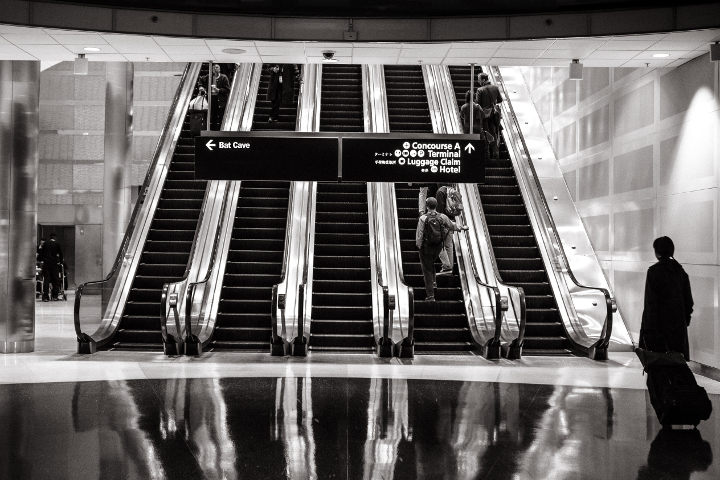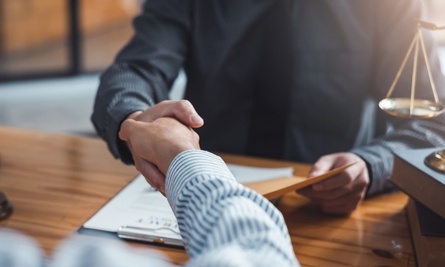
Several incidences of slipping, tripping or falling on staircases are reported every year. Those who own property are often legally responsible for stair accidents just as they are also liable for accidents involving common types of slip and fall accidents. These types of accidents fall under a category or law called “premises liability.” However, the staircase presents additional dangers, both hidden and obvious, that deserve special consideration. In case you are involved in a staircase accident, this is how to know whether to accuse the owner of the or not. To learn more about premises liability in Virginia, review our informational article:
Understanding Your Legal Options
If you want to hold a premise owner liable for your slip, trip or fall injuries on their property, at least one of these facts should be true:
i. The owner or their employee must be responsible for the spilling, wear or tear of the accident spot.
ii. Either the property owner or their employee knew the danger posed by the surface but never acted accordingly to rectify it.
iii. A “responsible” property caretaker would have detected and repaired or removed a surface that was likely to cause injury.
iv. In every case of a slip, trip or fall, the court or the concerned insurance company will always consider if your carelessness also contributed the staircase accident. The courts will use the “comparative negligence” laws to measure the level of your reasonableness or carelessness in how you went to the place and why you went there, in the moments just preceding the accident.
v. The outcome of many staircase accidents involving spilled slippery liquids or dropped dangerous objects will be dependent on the inquiry above.
Some faults on staircases often remain undetected following an accident. One may struggle to find out the cause of an accident and determine how the construction and maintenance of the staircase should have been. To learn more about proving fault in these types of cases, read our article, Proving Fault in Slip and Fall Accidents.
Factors That Effect A Slip and Fall Accident Case
In slip and fall accidents involving staircases, the context off the accident is very important in determining fault. To learn more about proving fault in these types of cases, read our article, Proving Fault in Slip and Fall Accidents. Below is a list of situations regarding the conditions of the stairs and building codes that could result in grounds for a lawsuit.
Slippery Surfaces
The worn-out part of a wooden or carpeted staircase poses great danger. However, a slightly worn staircase or carpet is likely to hide more danger than the evidently worn staircase as people are most unlikely to see the worn-out part.
Other staircases may be made of extremely polished wood or tile, which are more slippery than carpet, painted wood or stone. In case you fall on these staircases, the owner of the premise may be legally responsible for sacrificing safety for beauty.
Icy or Wet Outdoor Staircases
Risks of an accident are increased if snow, ice or rainwater collects on an outdoor staircase. Although people need to be careful in such weather conditions, the property owner may still be liable for negligence if an accident occurred.
Outdoor staircases must be maintained so that they do not allow a buildup of ice or water. Their surfaces must also be made of a material that does not become very slippery if wet.
Violation of Building Codes
All states and countries have building codes that builders and property owners are required to follow. These requirements often regulate the building of the following areas of staircases.
Handrails
Building codes demand that staircases have handrails. In case you fall on a staircase that is required to have a handrail, but does not, the property owner is likely to be liable for the injuries sustained. Staircase handrails must be of particular width or height, lack of which could cause one to fall even if the staircase was itself properly built.
Wrong Stair Depth or Height
The horizontal and vertical parts of each stair, called the “run” and “riser” respectively, must meet the minimum and maximum measurements for staircases as required by the building codes. The defectiveness of the staircase is determined by measuring the run and the riser against the standard building code.
After showing the defectiveness of the staircase, you must proceed to show that it caused your fall. The violation of the building code by the owner is likely to get you a favorable settlement.
Mismatched Stair Depth or Height
The allowable variance from one stair to the next is also prescribed by the building code. When we walk the staircase, our brains remember the height and depth of the previous step. The brain then tells the legs to go the same length to the next stair. If the leg moves a similar distance, but the stairs were uneven, one is likely to lose balance, stumble and fall.
Finding the Building Code
Your city or county’s building code can be found at your law library, the county building department or the local library. Go through the staircase requirements in the building code to find out whether the staircase in which you were involved in an accident meets those specifications.
Discuss You Options With a Legal Professional
Understandnig the context of your situation and your legal rights is essential when pursuing a personal injury claim for a slip and fall accident in Virginia. Due to the complexity of Virginia status, it is essential that you work with an experienced legal professional in order to ensure the best possible results for your case.
Set Up a Legal Consultation!
Deciding if you should pursue a claim for a slip and fall accident should be taken seriously. The highly qualified personal injury lawyers at The Brown Firm PLLC are able to provide you with the essential information you need in order to make a decision. To learn more about our services, or to discuss your case with an attorney – call or contact The Brown Firm PLLC online and schedule a consultation today.

